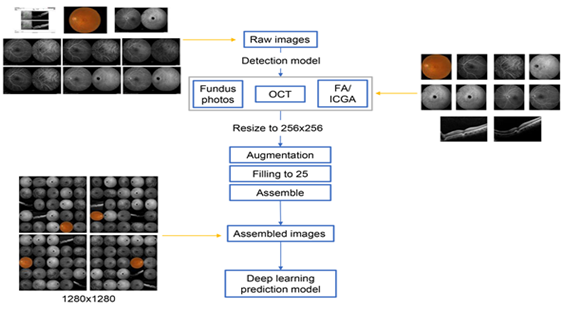Introduction
Artificial Intelligence For Diagnosis And Treatment of Common Retinal Vascular Diseases: The aim of our artificial intelligence model is to analyze the medical image of common chorioretinal vascular diseases and classify them according to the diagnosis and the severity (require anti-VEGF treatment or not). This model can assist the medical staff in rapidly predicting the disease diagnosis and severity from medical images. It can also facilitate the health insurance institutes to classify the images and revise reimbursement criteria. Multi-model
medical images (CF, OCT, FA) can be used in our model. There is no strict restriction on the number and proportion of each type of image. A larger assembled image will be created and subject to analysis.
Features / strengths
1. A deep learning model was built by combining medical images and artificial tags to automatically recognize common retinal lesions (AUC of 0.987) from retinal exams and predict whether a patient should be treated with anti-VEGF drugs (AUC of 0.969).
2. This model will provide objective information that will allow clinicians and drug reviewers to quickly reach consensus and approve patient medications, and to grasp the golden opportunity to treat retinopathy.
Specification in detail


